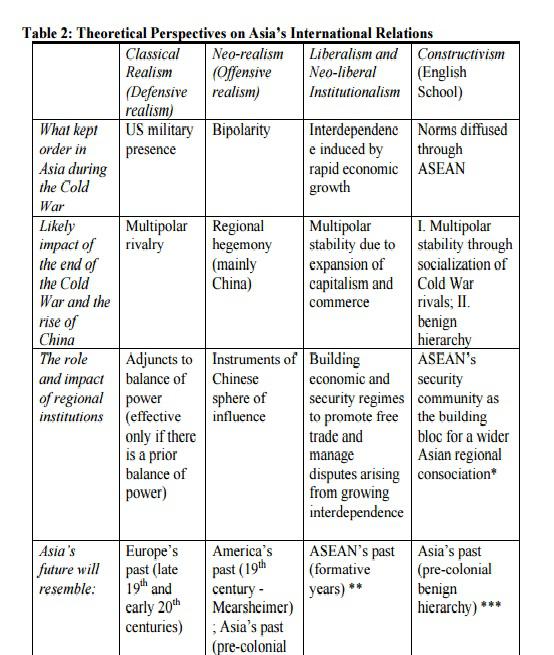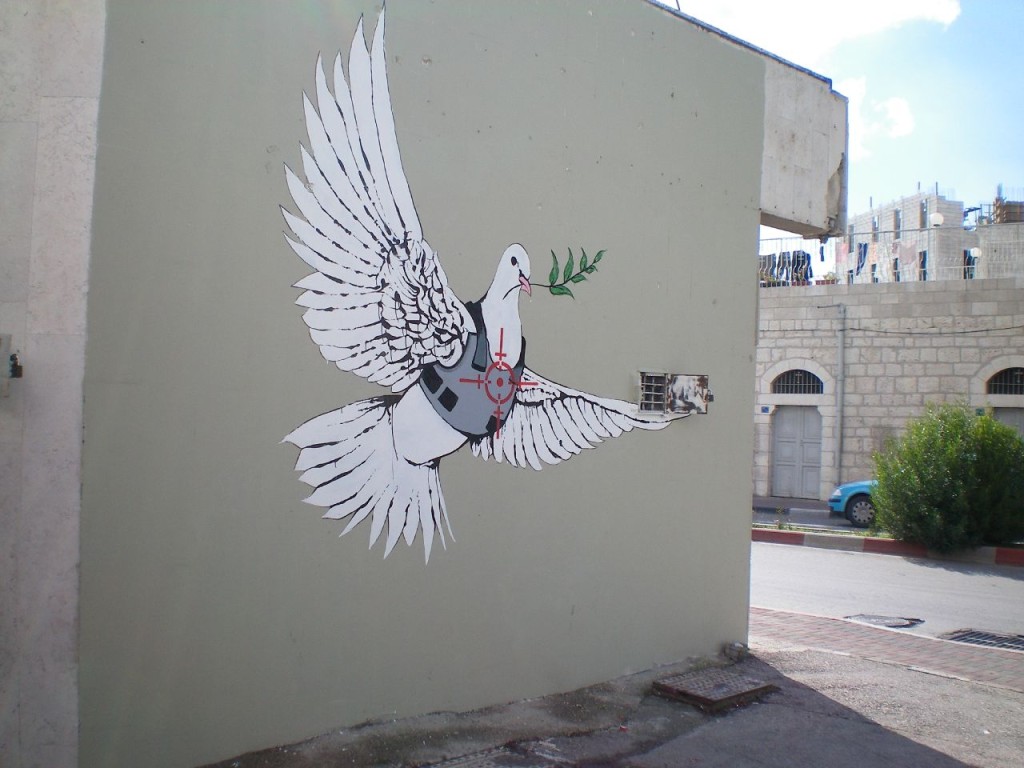The Southeast Asian peace is a term denoting a relatively peaceful environment in East Asia (regarding armed conflict) in the post-Cold-War era. This phenomena is especially intriguing due to the regional character which was prone to produce armed conflicts throughout history. A vast array of unresolved conflicting relations and hostile behavior of states contribute to the fact that the Southeast Asian peace is viewed as a paradoxical concept, which evokes new questions about peacekeeping and prevention of armed conflicts (Weissmann 2009). The uniqueness of the peace is defined by additional characteristics of the region: the lack of a rich security infrastructure and lack of conflict management mechanisms. Due to the regional specificity, it is important to analyze which actors and factors contribute to the Southasian peace, and which – despite the absence of the security infrastructure – tend to defuse the potential armed conflicts.
The democratic peace theory opens up the possibilities for answering these questions. If we consider the fact that post-Cold-War Southasian states took a democratic turn in terms of their political systems, as well as allowed for a somewhat liberal economic trend attracting new capital flows and built parallels with the Western democracies, we might have a partial explanation. A high level of political competitiveness is also one of the factors worth noticing, especially in terms of The Association of Southeast Asian Nations (ASEAN) spearheading the process. Researchers also expose the impact of culture and national identities, diplomatic practices and special ways of handling state relations, which are well explained under a constructivist theoretical umbrella. The special social structure of state relations is, indeed, an important factor of Southeast Asian peace and will provide us with substantial insight.
As mentioned above, the conflict-management processes in South and East Asia were numerous due to past grievances between the nations: the Chinese territorial conflicts with its southeast neighbors were stabilized (although unresolved), the nuclear crisis in the Korean peninsula is being handled. Sino-Japanese relations are still under fire by both states’ political elites and the impact of American foreign policy, but we cannot notice an interest of armed conflict in either Japan, nor China. The latter tried (at least economically) to stabilize relations with South Korea and Taiwan (Sukma 2010, Weissmann 2009). The Chinese ‘good neighbor’ politics made an important contribution to the spirit of southeast Asian relations and brought higher cooperation with ASEAN. Although the pattern of conflict in the region is cyclical – escalating from stability to security crises – the parties to conflicts always managed to reach a plateau of resolution. What is most intriguing in the peace, is not the absence of hostile relations, rather the ever-present potential for conflict, which eventually gives way to the benefits of economic cooperation (Acharya 2001).
Consulting a constructivist approach we can realize that the assumption of infrastructural lack in the region might be insufficient. It is likely that the Western understanding of the infrastructure itself prevents us from seeing how security is managed. Security institutions in Southeast Asia are allegedly much more concentrated in informal spheres, as we are accustomed to (Dongxiao 2001). The informality and the tendency to build consensual relations are said to be an inherent characteristic of the regional politics. The informality is related to the connectedness between political systems based on informal, personal networks between them. This constitutes the so-called ‘soft regionalism/institutionalism’ which is one of the key promoters of peace in the region (Weissmann 2009).
This approach towards conflict management is closely linked to ASEAN. The regional organization even coined a name for the abovementioned processes and relations: the ASEAN-way. The term is used to describe a diplomatic ‘style’, which promotes a high level of informal cooperation stemming from consultations and dialogs which have little base in the institutional order and bureaucratic norms. The conflicts rising throughout East and South Asia were all reduced by the ‘spill-overs’ of peace, due to the impact of economic cooperation promoted by ASEAN. This resulted in regional integration by adoption of free-trade agreements between China, Japan, South Korea and ASEAN and produced sufficient economic development for the states to hold their fire (Acharya 2007, Sukma 2001 in Wiessmann 2009).
What we can resurrect from these claims is the fact that political cooperation is managed loosely (in comparison to Western practices) and allows for greater maneuver place to create friendly relations and economic agreements. The economic benefits have created the practice of ‘peace at any price’ policies, which are lead by politicians aware of free-trade benefits and ready to adopt loose legislation in order to be able to maintain mutually beneficial relations. Although there is a thin line politics can walk between loose legislation and self-assertive action, there is something to be learned from the southeast Asian practices. What we must not forget is that these findings are only possible if we accept the regional specifics, which constitute a model that might not work anywhere else. However, it seems that the economic benefits of cooperation are a universal recipe for peace promotion.
Annex:
 Source: Acharya, Amitav. 2007. Theoretival Perspectives on International Relations in Asia: The New Regional System
Source: Acharya, Amitav. 2007. Theoretival Perspectives on International Relations in Asia: The New Regional System
References:
Acharya, Amitav. 2001. Constructing a Security Community in Southeast Asia. New York: Routledge. Available at: https://fmc90. files. wordpress. com/ 2010/ 05/ constructing-a-security-in-asean. Pdf.
Acharya, Amitav.2007. Theoretical Perspectives on International Relations in Asia. Draft Paper for the Conference on International Relations in Asia: The New Regional System, George Washington University, 27-29 September 2007. Available at: http://www.amitavacharya.com/sites/default/files/Theoretical%20Perspectives%20on%20International%20Relations%20in%20Asia.pdf.
Dongxiao, Chen. 2001. The constructivist challenge to the debate on East Asian security in the new century. The Constructivist Challenge: 167–184. Available at: http://press.anu.edu.au/wp-content/uploads/2013/05/ch133.pdf.
Goldsmith, Benjamin E. 2013. Domestic political institutions and the initiation of international conflict in East Asia: some evidence for an Asian democratic peace. International Relations of the Asia-Pacific 14 (1): 59–90. Available at: http:// irap. oxfordjournals. org/content/ 14/1/59.full.pdf+html.
Sukma, Rizal. 2010. ASEAN And Regional Security In East Asia. Security Politics in Asia and Europe: 109–120. Available at: http://www.kas.de/upload/dokumente/2010/06/PolDi-Asien_Panorama_02-2010/Panorama_2-2010_SecurityPolitics_Sukma.pdf.
Weissmann, Mikael. 2009. Informal and formal conflict prevention and peacebuilding in the Taiwan Strait, the Korean Peninsula, and the South China Sea 1990-2008. Gothenburg: School of Global Studies. Available at: https://www. diva-portal. org/ smash/ get/ diva2:780141/ FULLTEXT01.pdf.



